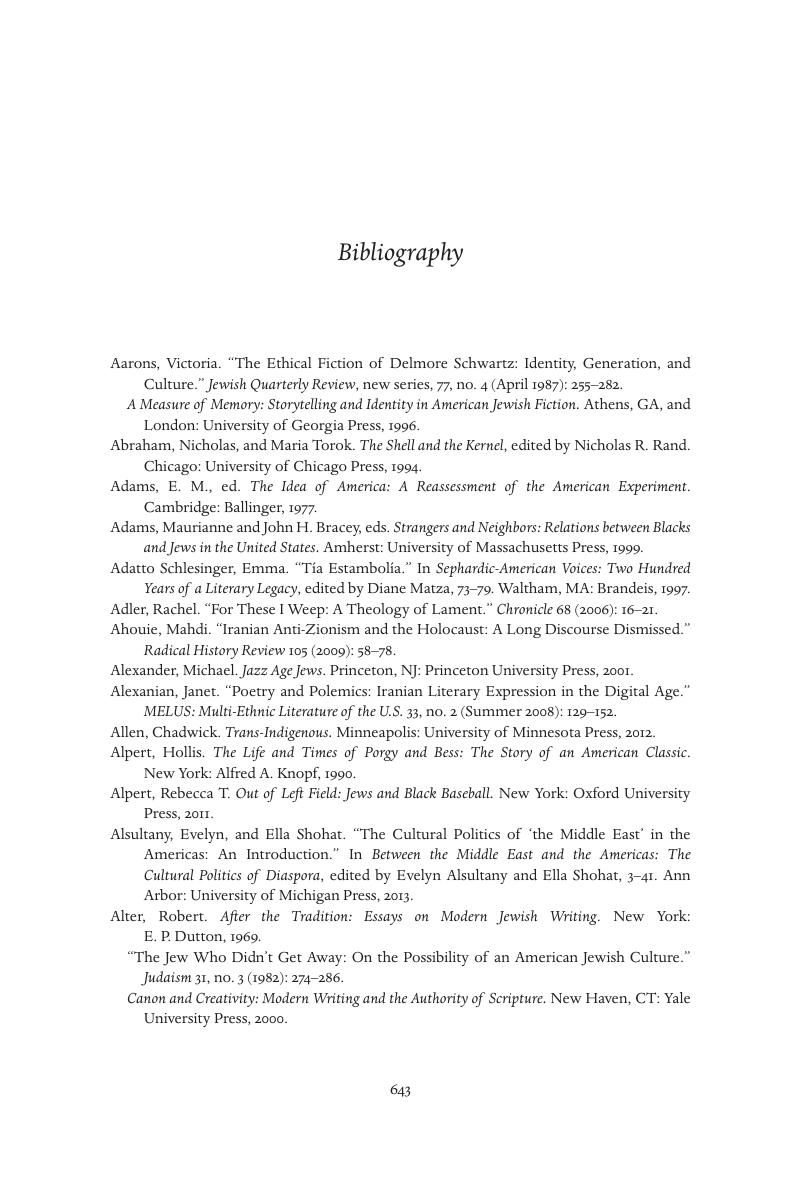Book contents
- The Cambridge History ofJewish American Literature
- The Cambridge History ofJewish American Literature
- Copyright page
- Contents
- Illustrations
- Notes on Contributors
- Book part
- Introduction
- Part I New World Encounters
- Part II Genres: Adopting, Adapting, Reinventing
- Part III Place and Peoplehood: Redefining “Here” and “There”
- Part IV Creating Fields
- Part V New Perspectives
- Bibliography
- Index
- References
Bibliography
Published online by Cambridge University Press: 05 December 2015
- The Cambridge History ofJewish American Literature
- The Cambridge History ofJewish American Literature
- Copyright page
- Contents
- Illustrations
- Notes on Contributors
- Book part
- Introduction
- Part I New World Encounters
- Part II Genres: Adopting, Adapting, Reinventing
- Part III Place and Peoplehood: Redefining “Here” and “There”
- Part IV Creating Fields
- Part V New Perspectives
- Bibliography
- Index
- References
Summary

- Type
- Chapter
- Information
- The Cambridge History of Jewish American Literature , pp. 643 - 672Publisher: Cambridge University PressPrint publication year: 2015



